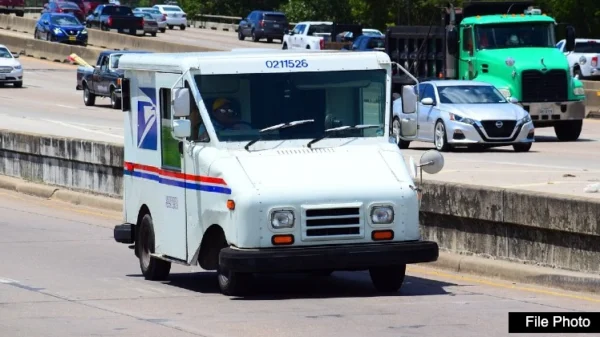The U.S. Postal Service (USPS) is sputtering out of control. Last November, the Board of Governors announced that America’s mail carrier lost $6.5 billion in fiscal year 2023. That’s just a drop in the bucket compared to more than $100 billion in net losses over the past 15 years. Yet, the agency has not learned its lesson, pushing profligacy to ever-higher gears.
Now, the USPS is mulling replacing more than 60 percent of its fleet with electric vehicles (EVs), up from the originally proposed 10 percent. This foolish move will result in higher taxpayer expenses, less reliable vehicles, and even slower mail delivery times. The USPS must reverse course and reject wasteful fleet procurement policies.
The USPS’ fleet of more than 200,000 has seen better days. The average mail truck is more than 20 years old and spontaneous combustion poses a real safety issue for thousands of agency employees. America’s mail carrier has long tried to kick the can down the road on fleet procurement but finally decided in the past decade to purchase roughly 160,000 replacement vehicles. The challenge has been to purchase these trucks in a cost-effective way that doesn’t result in further net losses.
The USPS originally estimated that 90 percent of their new vehicles would be conventionally powered, while 10 percent would be EVs. That is, until Postmaster General DeJoy solicited $3 billion from Congress in exchange for bolstered EV targets. In recent environmental impact analyses, the USPS lists its “preferred alternative” as purchasing 65,000 EVs out of a total of 106,480 vehicles (or about 62 percent). Environmentalist commentators have taken the USPS to task for not considering a 90-100 percent EV fleet, but the truth is that even 62 percent is far too costly and impractical.
As is the case so often, the USPS could have simply consulted its own Inspector General’s (IG) reporting to get a better idea of the risks and rewards of EV procurement. One IG report from March 2022 runs through different scenarios on agency EV use with detailed cost and mileage assumptions and finds that, under a wide range of cases, EV adoption would not be good for postal finances. According to the report, an EV fleet would be more expensive than conventional trucks, assuming “an average delivery route length of 24 miles per day, and 301 operating days per year.”
The key here is that EVs are approximately 11 percent more expensive up-front than their conventional counterparts, with cost recoupment possible down the road via reduced energy and maintenance costs. Even these assumptions may be too generous to electric vehicles. On page 7 of the report, the IG states, “[e]lectric vehicles are generally more mechanically reliable than gas-powered vehicles and would require less scheduled maintenance and reduced maintenance costs.”
But, according to an in-depth analysis by analytical firm We Predict, “in a three-month time frame, EV service costs were 2.3 times higher than a gasoline-powered car. At 12 months, EV service costs were still 1.6 times higher. We Predict found service-related costs averaged $306 per electric vehicle, while a gas-powered car averaged $189.” Therefore, the assumption that EVs have fewer moving parts and, therefore, cost less post-purchase may not necessarily be true.
The IG notes that there are some scenarios where 20-year total ownership costs could be lower for EVs than gas-powered trucks, but only if we assume that “electric vehicles have lower fuel and maintenance costs per mile.” And, even then, EVs would make sense on less than 10 percent of mail routes (in the 40–70-mile range).
The USPS is headed for a pothole with its misguided fleet procurement policies. America’s mail carrier must shift gears and deliver on affordable mail trucks.
David Williams is President of The Taxpayers Protection Alliance.






















